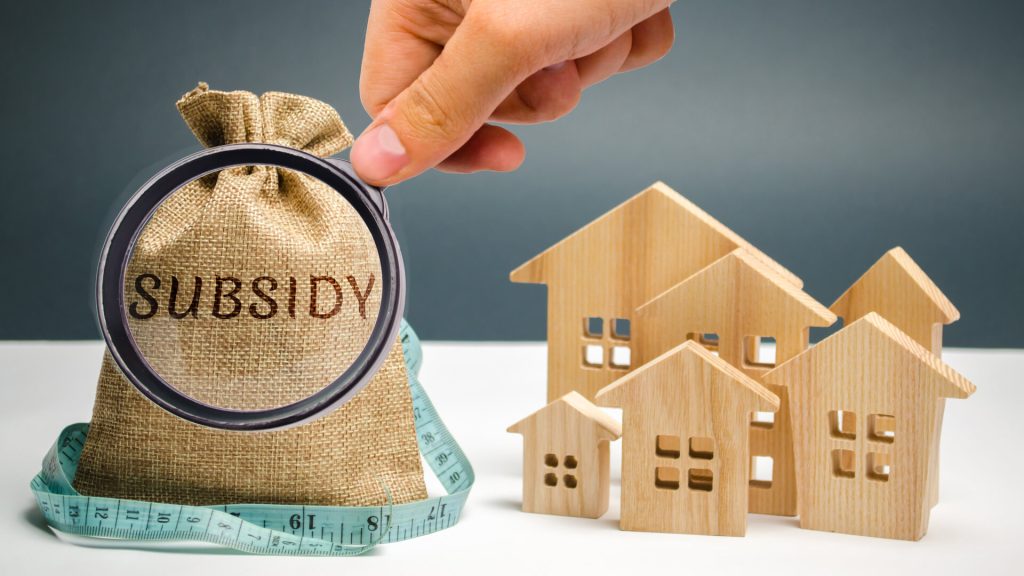Context:
PM Modi’s Government’s first term prioritized schemes for basic needs like housing, sanitation, and bank accounts, while reducing overall Subsidy Spending. This is seen as a shift from “new welfarism” to a renewed focus on targeted Subsidies and transfers.
What is Subsidy?
According to WTO, A subsidy has a very particular meaning under the Subsidies Agreement and U.S. law (Title VII of the Tariff Act of 1930). A subsidy is defined as a financial contribution by a government that provides a benefit. The forms that a subsidy can take include:
- a direct transfer of funds (e.g., a grant, loan, or infusion of equity);
- a potential transfer of funds or liabilities (e.g., loan guarantee);
- foregone government revenue (e.g., a tax credit); or
- the purchase of goods, or the provisions of goods or services (other than general infrastructure).
Three main categories of subsidy:
- Direct Subsidy: It entails the government making monetary payments without the exchange of goods or services.
- Indirect Subsidy: It involves supporting third parties without directly providing a monetary benefit, such as through loans or other non-monetary advantages.
- Subsidies Provided by the Government: It encompasses a range of financial aids, including welfare payments, unemployment benefits, and support to enterprises.
Indian Government Provides Various Subsidies
Food Subsidy:
- To provide essential food items to the population below the poverty line.
- Schemes: National Food Security Act (NFSA), Antyodaya Anna Yojana (AAY) and Pradhan Mantri Garib Kalyan Anna Yojana (PM-GKAY).
Education Subsidy:
- To support eligible students pursuing higher technical and professional education.
- Schemes: Pradhan Mantri Matru Vandana Yojana (PMMVY), Post Matric Scholarship Scheme for SC/ST Students and Central Sector Interest Subsidy Scheme (CSIS) Merit-based scholarship schemes.
Export/Import Subsidy:
- To encourage exports by making products competitive in the international market and support domestic companies.
- Schemes: Merchandise Exports from India Scheme (MEIS), Services Exports from India Scheme (SEIS), Free Trade Agreements (FTAs) Export-Oriented Units (EOUS) and Special Economic Zone (SEZs).
Housing Subsidy:
- To lower housing expenses for marginalized communities.
- Schemes: Pradhan Mantri Awas Yojana (PMAY), Interest Subsidy Scheme for Housing Loans and Credit Linked Subsidy Scheme (CLSS).
Oil & Fuel Subsidy:
- To address economic distress by controlling the prices of petroleum products.
- Schemes: Direct subsidies to oil marketing companies (OMCs) and price control mechanisms.
Tax Subsidy:
- To reduce the tax burden on specific businesses or industries to encourage consumption or production.
- Schemes: Startup India tax benefits, Infrastructure investment incentives and Special Economic Zone (SEZ) tax benefits.
Transport Subsidy:
- To promote industrialization in remote areas.
- Schemes: Transport Subsidy Scheme (TSS) and Freight Subsidy Scheme:
Fossil Fuel Subsidy:
- To lower the cost of fossil fuels and their production.
- Direct subsidies to coal mining companies and Tax breaks for oil exploration companies.
Agricultural or Farm Subsidy:
- To support agribusinesses and farms, manage agricultural commodity supply, and influence their cost and supply.
- Schemes: Minimum Support Prices (MSPs), Subsidies on fertilizers and pesticides and Crop insurance schemes.
Reasons Why Governments Provide Subsidies
- Price Stability and Poverty Prevention: Directly reducing the cost of essential goods, subsidies assist consumers during economic hardships, ensuring price stability and preventing poverty.
- Strategic Industry Support: Governments subsidize vital sectors such as agriculture, fishing, and manufacturing for national security and economic development.
- Social Welfare and Equity Promotion: Subsidies improve access to crucial services like education, healthcare, and public transportation for low-income populations, reducing inequality and promoting human development.
- Market Failure Correction: Addressing market failures, subsidies encourage the production of goods or services with positive externalities or rectify imperfect information.
- Political Considerations: Subsidies may be influenced by political motives, serving governments in gaining support from specific sectors or demographics, even in the absence of strong economic justification.
- Environmental Protection Incentives: Encouraging eco-friendly practices and technologies, subsidies for renewable energy or sustainable agriculture contribute to pollution reduction and resource conservation.
- Technological Innovation Support: Subsidies stimulate research and development, fostering innovation in new technologies and assisting companies in overcoming initial financial barriers.
- Trade Promotion Strategies: Export subsidies enhance global competitiveness, potentially boosting national income, although they may trigger trade conflicts.
- Foreign Policy Objectives: Subsidies are utilized as tools for foreign aid or geopolitical goals, influencing international affairs and alliances.
Challenges of Indian Subsidies
Fiscal Burden:
- The sheer cost of subsidies puts immense pressure on the government’s finances.
- In 2023-24, the estimated subsidy bill for India is a staggering ₹5.92 lakh crore (US$ 74 billion).
- It diverts resources from crucial areas like healthcare, education, and infrastructure development.
Inefficient Targeting and Leakages:
- Many subsidies lack proper targeting mechanisms, leading to leakages and benefiting unintended recipients.
- Comptroller and Auditor General of India (CAG), 2022 report estimated that leakages in various subsidy programs amounted to a staggering ₹1.2 lakh crore (US$ 15 billion).
Market Distortions:
- Subsidies can distort market prices and incentives, leading to inefficient allocation of resources and overconsumption of subsidized goods.
- For instance, cheap subsidized fertilizers might encourage overuse, harming soil health and the environment.
Environmental Concerns:
- Certain subsidies, like those for fossil fuels, can discourage investments in renewable energy and contribute to environmental degradation.
- Finding a balance between supporting vulnerable populations and promoting sustainable practices is crucial.
Political Pressures:
- The popularity of subsidies makes them politically sensitive, often leading to resistance from vested interests even when reforms are necessary.
- Striking a balance between political feasibility and economic rationality remains a challenge.
Way Forward
- To tackle India’s subsidy challenges, a four-pronged approach is crucial: smarter targeting with Aadhaar, rationalizing aid by prioritizing impactful sectors, expanding DBT for transparency, and investing in long-term alternatives like renewable energy and efficient transport, ultimately moving away from dependence on subsidies. This multi-faceted strategy paves the way for a more equitable and efficient system.

